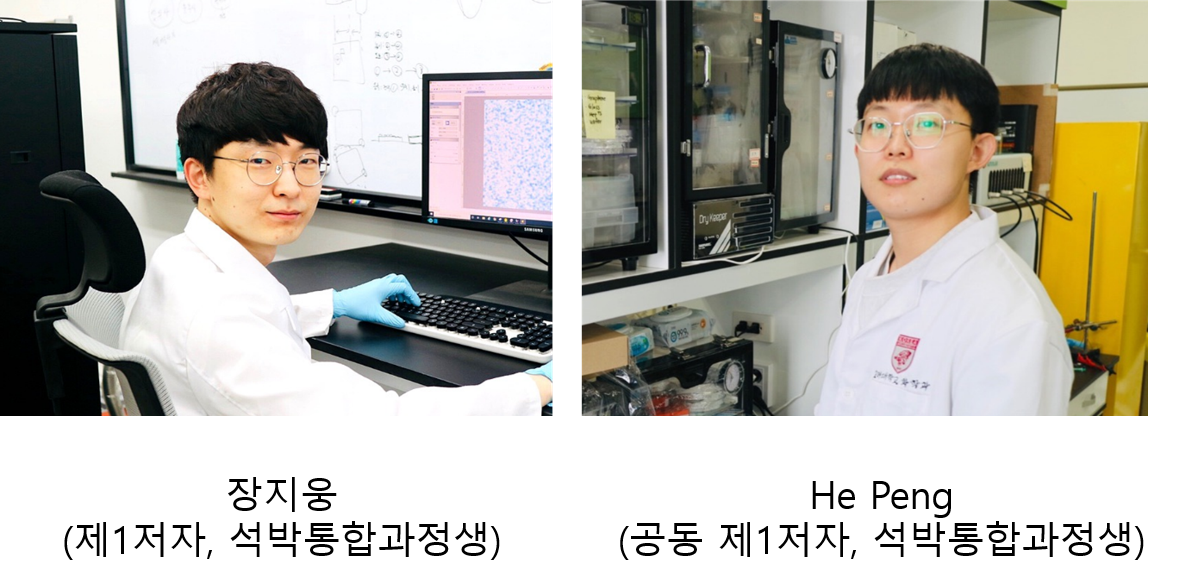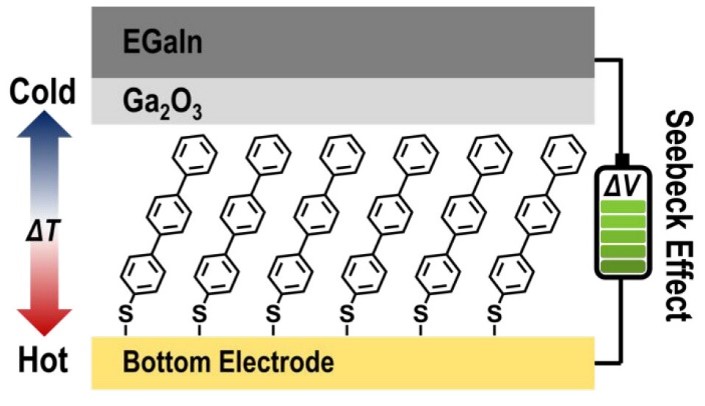
Understanding the thermoelectric effects that convert energy between heat and electricity on a molecular scale is of great interest to the nanoscience community. As electronic devices continue to be miniaturized to nanometer scales, thermoregulation on such devices becomes increasingly critical. In addition, the study of molecular thermoelectricity provides information that cannot be accessed through conventional electrical conductance measurements. The field of molecular thermoelectrics aims to explore thermoelectric effects in electrode-molecule-electrode tunnel junctions and draw inferences on how the (supra)molecular structure of active molecules is associated with their thermopower. In this Account, we introduce a convenient and useful junction technique that enables thermovoltage measurements of one molecule thick films, self-assembled monolayers (SAMs), with reliability, and discuss the atomic-detailed structure-thermopower relations established by the technique. The technique relies on a microelectrode composed of non-Newtonian liquid metal, eutectic gallium–indium (EGaIn) covered with a native gallium oxide layer. The EGaIn electrode makes it possible to form thermoelectric contacts with the delicate structure of SAMs in a noninvasive fashion. A defined interface between SAM and the EGaIn electrode allows time-effective collection of large amounts of thermovoltage data, with great reproducibility, efficiency, and reliable interpretation and statistical analysis of the data. We also highlight recent efforts to utilize the EGaIn technique for probing molecular thermoelectricity and structure-thermopower relations. Using the technique, it was possible to unravel quantum-chemical mechanisms of thermoelectric functions, based on the Mott formula, in SAM-based large-area junctions, which in turn led us to set various hypotheses to boost the Seebeck coefficient. By validating the hypotheses again with the EGaIn technique, we revealed that the thermopower of junction increases through the reduction of the energy offset between accessible molecular orbital energy level and Fermi level or the tuning of broadening of the orbital energy level. Such alterations in the shape of energy topography of junction could be achieved through structural modifications in anchoring group and molecular backbone of SAM, and the bottom electrode. Molecular thermoelectrics offers a unique opportunity to build a well-defined nanoscale system and isolate an effect of interest from others, advancing fundamental understanding of charge transport across individual molecules and molecule-electrode interfaces. In the Account, we showed our recent work involving carefully designed molecular system that are relevant to answering the question of how thermopower differs between the tunneling and thermal-hopping regimes. The field of molecular thermoelectrics needs to address practical application-related issues, particularly molecular degradation in thermal environments. In this regard, we summarized the results highlighting the thermal instability of SAM-based junctions based on a traditional thiol anchor group and how to circumvent this problem. We also discussed the power factor (PF)─a practical parameter representing the efficiency for converting heat into electricity─of SAMs, evaluated using the EGaIn technique. In the Conclusion section of this Account, we present future challenges and perspectives.

https://pubs.acs.org/doi/full/10.1021/acs.accounts.3c00168
 Ultranarrow Mid-infrared Quantum Plasmon Resonance of Self-do...
Ultranarrow Mid-infrared Quantum Plasmon Resonance of Self-do...
 Perovskite Nanocrystals Protected by Hermetically Sealing for...
Perovskite Nanocrystals Protected by Hermetically Sealing for...

















